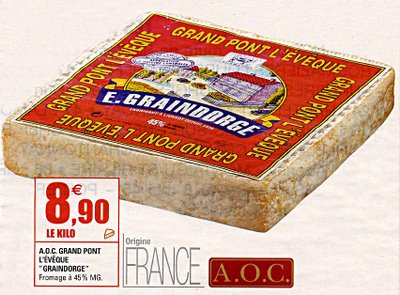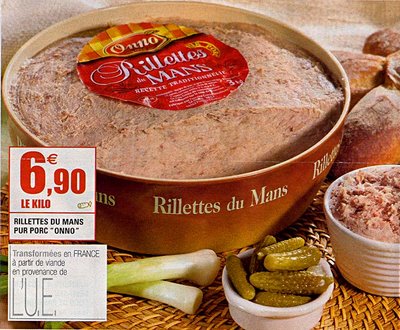After the July heatwave in the Loire Valley, the weather turned much milder on August 1. That was three weeks ago. Since then, we have had exactly one day when the temperature approached 80ºF (it was 26.1ºC on August 7).
Not one other day in August has produced a temperature as high as 25ºC (77ºF). Fortunately, only one day had a high temperature below 20ºC (68ºF). Mornings have been pretty chilly, and it has rained off and on for three weeks. We've had 34 mm of rain in August — that's not quite 1½ inches — mostly in little surprise showers.
I believe global warming is real, based on reports I've seen about the meltdown of the icecaps in the Arctic and Antarctic. But I don't really believe that recent heatwaves in France and California and New York, to name a few examples, are much of an indication of climate change. Weather is cyclical. Hot in July, chilly in August. This year. In fact, our August weather is much more typical of summertime in northern France than the July heat was.
So what do you do when you have had a month of very hot weather and then find yourself living through a virtual cold snap? Well, you harvest the bounty of the vegetable garden, which enjoyed July's hot weeks. And you cook. This August has been a good time to have the oven on and hot. And a good time to have big pots of water and sauces boiling on the stove.
As I'm sure I've said already, we have an overabundance of tomatoes from our backyard garden this summer. Back in May, we first bought six plants at an outdoor market, two each of three red varieties. Then we saw some yellow tomatoes at another market, and we went ahead and bought two plants even though we didn't need them.
 An abundance of tomatoes from the garden
An abundance of tomatoes from the gardenNext thing you know, we are in a garden center and there they have a six-pack of Roma tomatoes for a couple of euros. We don't need them, but Romas (you know, the plum-shaped tomatoes that are nearly seedless) are so good for sauces. We end up buying the six-pack. So we have 14 tomato plants. Or maybe 15 — there's also a plant that produces green tomatoes (yes, green when ripe) that I bought as a curiosity.
What can you do with so many tomatoes? Make ham sandwiches with lettuce, tomato, and mayonnaise. But that only takes you so far. Cook up big batches of tomatoes and make quarts of sauce. That gets rid of a lot of them. Tomato, basil, and mozzarella salads use up a few more. And then there's salsa.
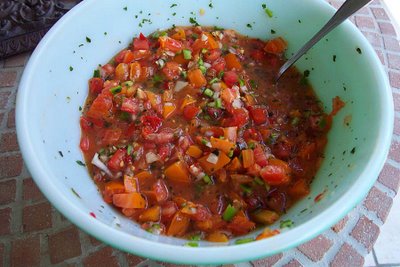
Salsa is a treat here because it's not a standard item (yet). You can find it, and corn chips too, in the supermarkets nowadays, but not very many people know what it is or how you eat it. Many French people are probably afraid to buy it because it looks hot and spicy. The French palate is not accustomed to highly spiced foods.

Just last Saturday I made salsa to go with what we call
thingaritos (credit and thanks for the idea goes to Cheryl). To use up another vegetable we have too many of, I added chopped cucumbers to the salsa, along with chopped onions, garlic, green peppers, cayenne peppers, and tomato.

For the thingaritos I made Mexican-style
carnitas — braised, shredded pork cooked with cumin and other spices — and included red beans, rice, avocado,
crème fraîche, and cheese. (I use cantal cheese here because I think it is similar to good cheddar.)
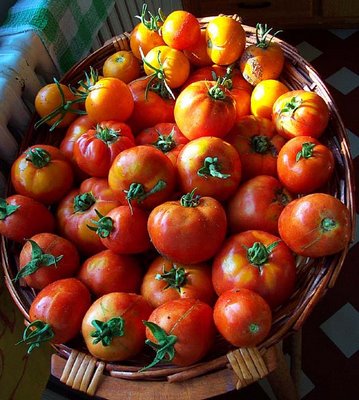
A few days earlier when we had a load of tomatoes, I used some of the bigger ones by making stuffed tomatoes. That's a classic French dish. For the stuffing, I had a mixture of ground beef and ground pork (sausage meat) seasoned with onion, garlic, green pepper, herbs, and spices.
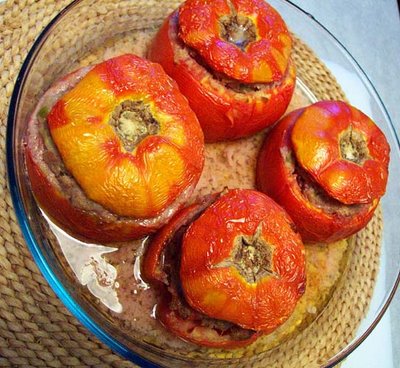
And I used that same meat stuffing in some big yellow squash we had harvested at the same time. A lot of this food has gone into the freezer and we will eat it during the winter.
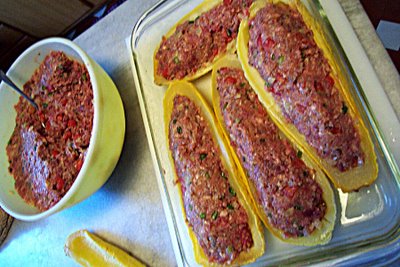
Of course we always eat some right away, while it's hot, just to make sure it is good enough to save for later enjoyment. Here's how the squash came out:

A little splash of good tomato sauce on the stuffed squash makes it really good. Luckily, we just happened to have some.
We also have some eggplants in the garden. Quite a few, actually. Here are some of them.

What might be called eggplant parmesan is a good way to cook and enjoy eggplants, and the added bonus is that the dish includes tomatoes. What I do is slice the eggplants and bake the slices for a few minutes on an oiled cookie sheet, until they are fairly soft and starting to brown (
here's a picture). Then I layer the cooked eggplant slices along with sliced raw tomatoes and slices of mozzarella cheese.
There's really no parmesan involved, so eggplant "parmesan" is a misnomer. Cooking the eggplant ahead of time prevents it from releasing too much liquid in the pan with the tomatoes and cheese, and cooking it on cookie sheets in the oven rather than frying it means that it absorbs a lot less oil, so the dish is lighter.

Above are two dishes of the eggplant
gratin I made. One had a layer of tomatoes on top, and the other a layer of eggplant. It just worked out that way. Both are covered with slices of mozzarella that have melted and browned. Here's how it looks when you cut into it:

Another plant we have an abundance of is basil. We use it in tomato salads, of course, and then Walt makes very good pesto with it. Maybe he'll publish his recipe/method one day. Yesterday for lunch we had pasta and pesto:
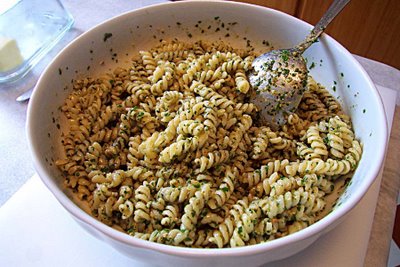
Another thing that happened in July when our friend CHM was here is that we bought two baguettes every day from the bread lady rather than just one. CHM loves good French bread, as do we. Even so, we ended up with too much most days, and we found we had many ziploc bags full of bread in the freezer by August 1. So I made bread pudding:

We also have an abundance of apples. We made applesauce and apple jelly earlier — about three quarts of each. But just a couple of days ago Walt went out and picked some more apples, with which he made this apple pie (or tart, really), using store-bought frozen puff pastry from chez Picard.
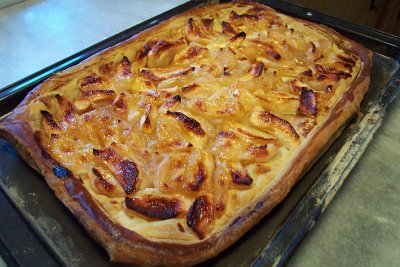
So that's how we've been spending our summer vacation. It's too bad we don't have time to cook like this when we have company here...


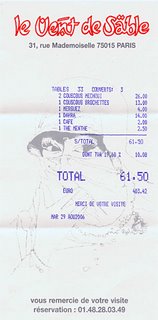 If you don't know what couscous is, this will give you an idea:
If you don't know what couscous is, this will give you an idea:


















